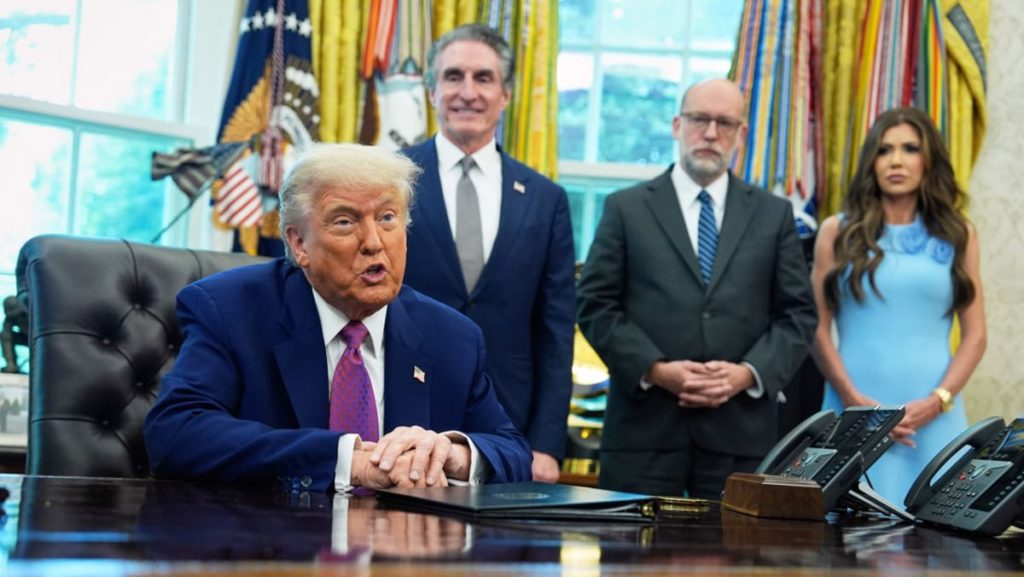TRADE POLICY REDEFINED
The president has redefined normal trade policy. Talk of TACO (Trump Always Chickens Out) is misleading. True, the administration has veered back and forth on tariffs, one day threatening extraordinarily high barriers, the next, after financial-market blowback, lowering or pausing them while it negotiates.
Yes, by the standards of his most audacious threats, today’s average effective tariff of roughly 15 per cent looks timid. But measured against pre-Trump, it’s still transformative, and so is the thinking that underpins it.
The presumption in favour of low or zero tariffs is gone. So is the idea that trade is positive-sum, and that a multilateral rule-based system is the best way to realise the gains.
When the administration last week doubled US tariffs on steel and aluminium from 25 per cent to 50 per cent, the reaction wasn’t, “What on earth are they thinking?” It was, “Well, that doesn’t much change the overall average.”
All by itself, the so-called “baseline (that is, universal) reciprocal” tariff of 10 per cent renounces the post-war trading order – and it’s already seen as no big deal.
This new Washington Consensus isn’t the only factor. Many businesses are pushing back against the new tariffs, arguing that the barriers will boost costs, disrupt supply chains and turn earlier investments into losses. But once they’ve adapted to the new regime, the same calculations will push the other way: Please don’t change the rules again.
In addition, domestic producers facing less competition from abroad will be able to raise their prices. Once they start collecting the rents created by trade barriers, they’ll favour retaining them, or maybe raising them further.


